Hearst Castle
Introduction
Text-to-speech Audio
Images
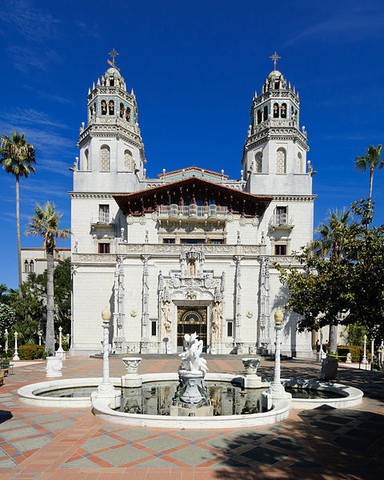
Xanadu Castle inspired by Hearst Castle
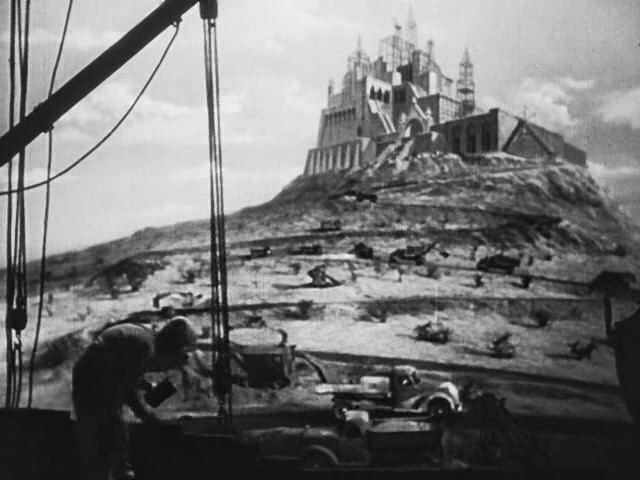
Cover for Citizen Kane film
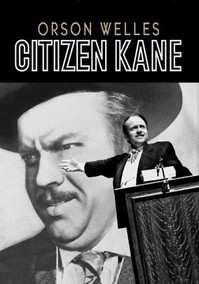
William Randolph Hearst.
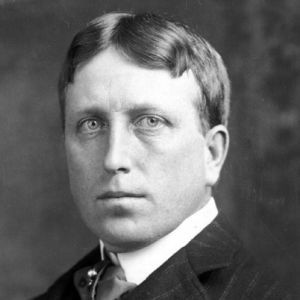
Undated photo of dining room
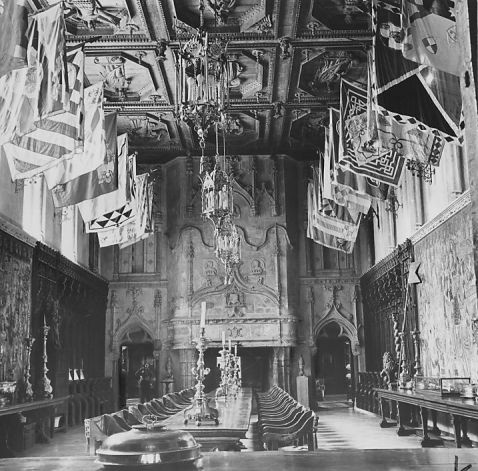
Hearst and his architect, Morgan
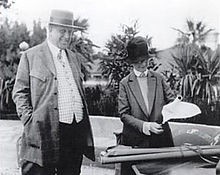
Ariel view

Scene from 1992 film, Chaplin. Here, Chaplin, played by Robert Downey Jr., is playing tennis with actor Douglas Fairbanks Sr. (Played by Kevin Kline) at one of Hearst Castle's tennis courts (filmed on location)
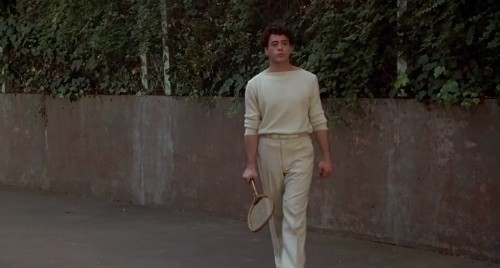
Downey Jr. (Chaplin) and Kline (Fairbanks Sr.) pose for promo shots at Hearst Castle. Posing with diving board next to one of the other outside pools at Hearst Castle.
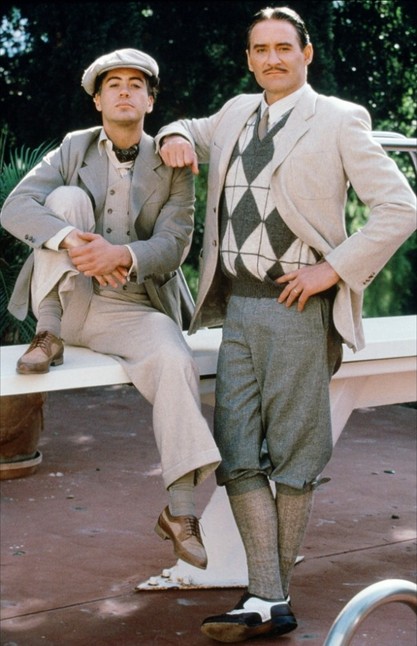
Backstory and Context
Text-to-speech Audio
Hearst Castle was built on Rancho Piedra Blanca that William Randolph Hearst's father, George Hearst, originally purchased in 1865. The younger Hearst grew fond of this site over many childhood family camping trips. He inherited the ranch, which had grown to 250,000 acres and 14 miles of coastline, from his mother Phoebe Hearstin 1919. Although the large ranch already had a Victorian mansion, the location selected for Hearst Castle was undeveloped, atop a steep hill whose ascent was a dirt path accessible only by foot or on horseback over 5 miles of cutbacks.
Hearst first approached American architect Julia Morgan with ideas for a new project in April 1915, shortly after he took ownership. Hearst's original idea was to build a bungalow.
After approximately one month of discussion, Hearst's original idea for a modest dwelling swelled to grand proportions. Discussion for the exterior style switched from initial ideas of Japanese and Korean themes to the Spanish Revival that was gaining popularity and that Morgan had furthered with her work on the Los Angeles Herald Examiner headquarters in 1915. Hearst was fond of Spanish Revival, but dissatisfied with the crudeness of the colonial structures in California. Mexican Colonial architecture had more sophistication but he objected to its profusion of ornamentation. Turning to the Iberian Peninsula for inspiration, he found Renaissance and Baroque examples in southern Spain more to his tastes. Hearst particularly admired a church in Ronda and asked Morgan to pattern the Main Building towers after it. The Panama-California Exposition of 1915 in San Diego held the closest approaches in California to the look Hearst desired. He decided to substitute a stucco exterior in place of masonry in deference to Californian traditions.
By late summer 1919 Morgan had surveyed the site, analyzed its geology, and drawn initial plans for the Main Building. Construction began in 1919 and continued through 1947 when Hearst stopped living at the estate due to ill health. Morgan persuaded Hearst to begin with the guest cottages, because the smaller structures could be completed more quickly.
The estate is a pastiche of historic architectural styles that its owner admired in his travels around Europe. Hearst was a prolific buyer who did not so much purchase art and antiques to furnish his home as he did build his home to get his bulging collection out of warehouses. This led to incongruous elements, such as the private cinema, whose walls were lined with shelves of rare books. The floor plan of the Main Building is chaotic due to his habit of buying centuries-old ceilings, which dictated the proportions and decor of various rooms.
Hearst Castle featured 56 bedrooms, 61 bathrooms, 19 sitting rooms, 127 acres of gardens, indoor and outdoor swimming pools, tennis courts, a movie theater, an airfield, and the world's largest private zoo. Zebras and other exotic animals still roam the grounds. Morgan, an accomplished civil engineer, devised a gravity-based water delivery system that transports water from artesian wells on the slopes of Pine Mountain, a 3,500-foot high peak 7 miles east of Hearst Castle, to a reservoir on Rocky Butte, a 2,000-foot knoll less than a mile southeast from Hearst Castle.
One highlight of the estate is the outdoor Neptune Pool, located near the edge of the hilltop, which offers an expansive vista of the mountains, ocean and the main house. Due to drought conditions and leaks in the pool, it is now drained. The Neptune Pool patio features an ancient Roman temple front, transported wholesale from Europe and reconstructed at the site. Hearst was an inveterate tinkerer, and would tear down structures and rebuild them on a whim. For example, the Neptune Pool was rebuilt three times before Hearst was satisfied. As a consequence of Hearst's persistent design changes, the estate was never completed in his lifetime.
Although Hearst Castle's ornamentation is borrowed from historic European themes, its underlying structure is primarily steel reinforced concrete. The use of modern engineering techniques reflects Morgan's background as a civil engineering graduate of the University of California, Berkely and the first female architecture graduate of the Ecole nationale superiuere des Beaux-Arts in Paris. Morgan designed tiles for the castle, and used several tile companies to produce them: Solon and Schemmel of San Jose, Grubey Faience Company from Boston, Batchelder of Pasadena and California Faience from Berkley. Albert Solon and Frank Schemmel came to Hearst Castle to perform the tile work.
During Hearst's ownership a private power plant supplied electricity to the remote location. Most of the estate's chandeliers have bare light bulbs, because electrical technology was so new when Hearst Castle was built.
The total square footage of the buildings on the estate exceeds 90,000 square feet. The area of Casa Grande, the "castle", is 60,645 square feet.
In 1992, the biopic Chaplin, starring Robert Downey Jr., filmed number of scenes at Hearst Castle when portraying scenes of Charlie Chaplin's life when he visited Hearst and his home. Downey Jr. received a Oscar nomination for Best Actor.
